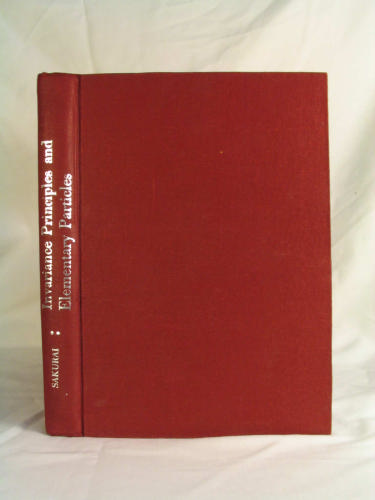Invariance Principles and Elementary Particles book
Par reddick jeffery le mercredi, mai 25 2016, 04:26 - Lien permanent
Invariance Principles and Elementary Particles. Sakurai J.J.

Invariance.Principles.and.Elementary.Particles.pdf
ISBN: 0691079870,9780691079875 | 338 pages | 9 Mb

Invariance Principles and Elementary Particles Sakurai J.J.
Publisher: PUP
If quantum mechanics is sacred, apparently other principles must go: either those of relativistic invariance, or of locality, or both. These principles clash when pushed to the extreme—the sharpest version of the problem arises when we collide two particles at sufficient energy to form a black hole. The findings could have implications for superstring theory — the idea that all fundamental particles are actually loops of vibrating string — which is one attempt to unify nature's forces and create a theory of everything. As with the LLI experiment, Hunter explained that the existence of a permanent EDM of any fundamental particle violates a major physical principle—in this instance, time-reversal invariance. A theory of fundamental particle interactions built from the gauge invariance principle alone doesn't allow the existence of massive gauge bosons. The Higgs boson plays a key role in the Standard Model: it is related to the unification of the electromagnetic and weak forces, explains the origin of elementary particle masses, and provides a weakly coupled way to . There are some apparent (and somewhat controversial) counter-examples: the cosmological constant problem is a much more severe 'fine-tuning' problem which may be explained anthropically rather than through more fundamental principles. In Relativistic QMech (high speed elementary particles that is) one should not at all talk about the position of a photon. Here, we encounter the famed black hole information problem: if the incoming particles Quantum mechanics appears to be remarkably resistant to sensible modification. It is the simplest explanation for how the electroweak symmetry was broken in the very early universe, giving mass to elementary particles. Provide the last missing piece in the nearly 40-year-old Standard Model of particle physics. As Einstein surmised decades ago, this will probably require enlarging the symmetry group (i.e., the invariance principles) that governs physics. �This principle is invariant for any kind of coordinates transformation (any kind of coordinate system) •This principle can be expressed also for non-mechanical systems (thermodynamic systems, electromagnetic fields, elementary particle fields). We can't also talk about a position of a photon if its really high energy due to Uncertainty Principle. Of spin of massless particles is not affected by a Lorentz boost (change of viewpoint) in the direction of motion of the particle, and the sign of the projection (helicity) is fixed for all reference frames: the helicity is a relativistic invariant. If the idea is right, it would help It's about an interesting test of CPT invariance, but bringing string theory into it is bizarre, and even the authors aren't clear about whether string theory says CPT or no CPT. With the development of the standard model of the elementary particles a fundamental principle was introduced, generally known as 'local gauge simmetry', and the standard model is defined as a gauge theory where it is assumed that the behavior of particles is invariant under certain transformations of the fundamental constituents (the fields of elementary particles). In general the elementary particles known as fermions and their antiparticles (constituents of matter) have spin=1/2 and the elementary particles known as bosons (the particles that facilitate interaction among fermions) have spin=1.
Discrete Mathematics with Graph Theory ebook download